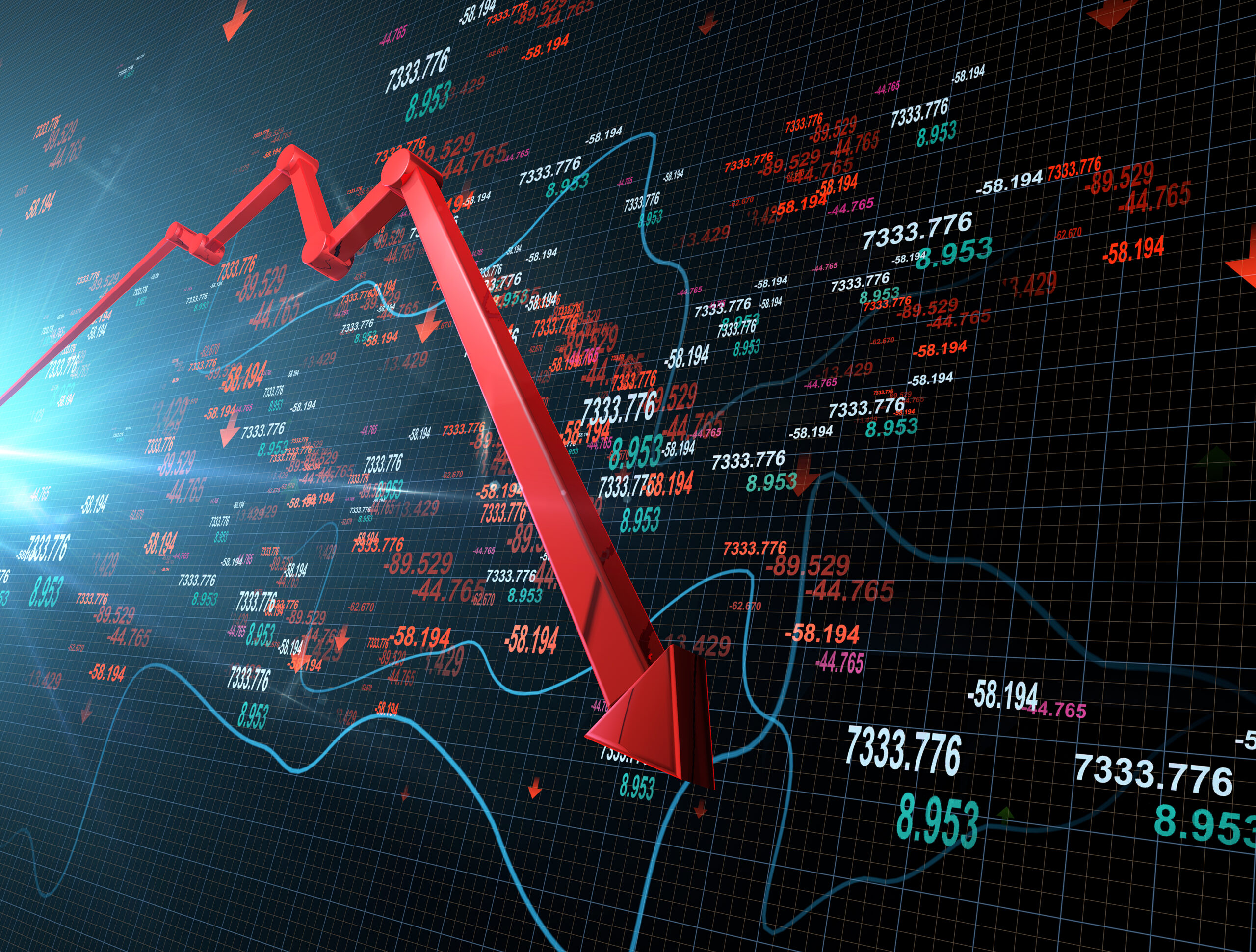Deflation is a decrease in the price of goods and services. Deflation is the opposite of inflation, which is an increase in the price of goods and services. Inflation and deflation are two sides of the same coin. Too much inflation is extremely bad for an economy, but so is too much deflation.
Deflation is often seen as a bad thing, but it can also be a good thing. When it comes to investing, deflation is generally a negative thing. It means that the prices of goods and services are falling. When deflation occurs, people are less likely to spend, since they expect prices to fall further. This leads to a decline in economic activity and a decline in the demand for goods and services. If deflation continues for too long, it can lead to a prolonged depression.
Deflation is a significant risk, because it has a huge impact on the economy. But, it is less likely to occur, compared to the risk of the opposite problem: inflation.
Inflation vs. deflation
Inflation and deflation are opposites. Simply put, when the Federal Reserve allows too much money to be in circulation, prices go up, and that is called inflation. When the Federal Reserve allows too little money to be in circulation, prices go down, and that is called deflation.
When prices go up, the value of money goes down. The money becomes less valuable. When prices go down, the value of money goes up. The money becomes more valuable.
Inflation and deflation are the two main causes of the business cycles and the “boom and bust” cycles that we have in the US economy. Deflation is a vicious cycle, which leads to a downward spiral. Inflation is a vicious cycle, which leads to a upward spiral.
Deflations impacts on the economy are also seen as one of the major causes of the Great Depression.
Deflated prices and wages are a drag on economic growth because they reduce the amount of money that people have to spend and make it harder for them to get loans. Deflation also encourages people to put off big-ticket purchases like cars or homes because their cost will be lower in the future.
What is the connection between the Great Depression and the stock market crash of 1929?
In October 1929, the stock market crashed, wiping out 40 percent of the paper values of common stock. Even after the stock market collapse, however, politicians and industry leaders continued to issue optimistic predictions for the nation’s economy.
Most people believed that the economic “bad times” would be short-lived and that the stock market crash would be followed by a quick turnaround.
Preventing deflation is an entirely different challenge from preventing inflation. Inflation is a monetary phenomenon, but deflation is a real phenomenon, and these two things cannot be completely separated. One of the ways a central bank can best help the economy is by ensuring that people have sufficient confidence in the future to invest, to spend, and to hire people.
But the technical tools of central banking are very different from the tools of macroeconomics, and mistakes made in the use of macroeconomic tools can easily get the central bank into trouble. The central bank is not like a general fighting a war, who can order his troops to move from front to front until the war is won. The central bank can be a passive bystander if the economy is in a recession, but it can be only a partial bystander if the economy is in a deflationary spiral. So it is crucial that the central bank understands the difference between the two, and understands the limitations of its own power.
If the central bank sees the economy as being in an inflationary spiral, then it will try to use monetary policy to bring the inflation under control. If the economy is in a deflationary spiral, then the central bank should not be trying to bring inflation under control. The worst thing that a central bank can do in a deflationary spiral is to raise interest rates.
To understand why this is true, we need a very clear picture of what deflation is.
Deflation is a fall in the level of prices (as opposed to a fall in the rate of inflation). When a central bank raises interest rates in an attempt to prevent an inflationary spiral, it is expecting that by reducing the supply of money, it will cause prices to rise more slowly. But when a central bank raises interest rates in an attempt to prevent a deflationary spiral, it is expecting that by reducing the supply of money, it will cause prices to fall. This is exactly the opposite of what it should be doing.
To understand why it should not be doing this, consider the following scenario. Suppose that the central bank has raised interest rates to 10 percent. The people who want to borrow money are having trouble finding it, and the people who are in a position to lend money are not interested in doing so, because they expect that the money they lend will be worth more in the future. That is, they expect that prices will fall.
This is not a good situation, but it is not necessarily a bad situation. What is bad is if the people who want to borrow money also expect that prices will fall – that prices will fall even more than they expect interest rates to rise. In that case, they suspect that they will not be able to repay their loans. They are afraid that they will become bankrupt. They are afraid that other people will become bankrupt. They are afraid that the value of their assets will fall. They are afraid that their homes and businesses will become worthless. They are afraid that they will be left with worthless paper money and will not be able to buy anything.
The worst thing that a central bank can do in this situation is to raise interest rates. The central bank is then creating an expectation of a continuing fall in the value of money. It is making people even more afraid of the future. It is making the situation even worse.
Inflation and Deflation in the United States
Deflation was a big problem during the Great Depression. The Great Depression began after the stock market crashed in 1929. Deflation was a big reason why the stock market crashed. The stock market is a place where everyone from around the world comes to invest their money. When the stock market crashed, people began to lose confidence in the economy. People began to hoard money and didn’t spend it. When people don’t spend their money, there isn’t enough demand for goods and services. This leads to unemployment, because companies don’t have enough customers. When there is too much unemployment, wages fall.
It’s a vicious cycle that led to the Great Depression.
The Great Depression ended when the government decided to increase the money supply and reduce interest rates. This caused deflation to become inflation and the economy grew again. Deflation was a problem during the Great Depression, but inflation has been an even bigger problem over the last few decades.
In the 1970s, inflation was over 10%. In the early 1980s, it was over 20%. Inflation has been higher than normal since the mid-1980s. It’s been over 4% since 2000. Just this week we learned that it is 7% in 2021.
Inflation has been a big problem for the United States for decades. Since the recession ended in 2009, the Fed has kept interest rates at rock bottom levels. This has caused the demand for money to increase. It has also caused the demand for goods and services to decline.
Inflation has been a historic lows until 2021, and is much higher than the Fed would like. The bottom line: Inflation is generally always a bigger problem than deflation.



